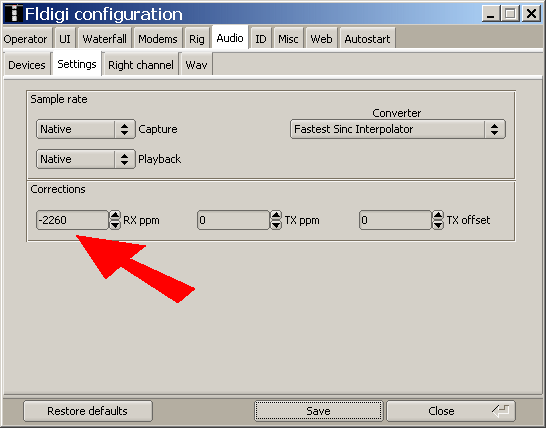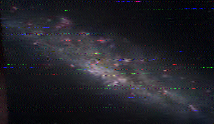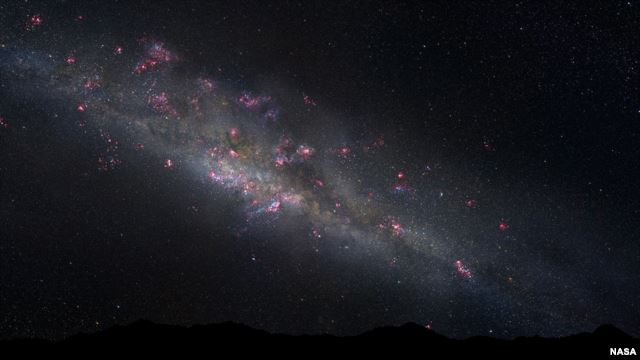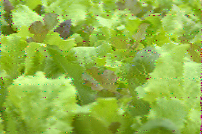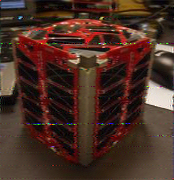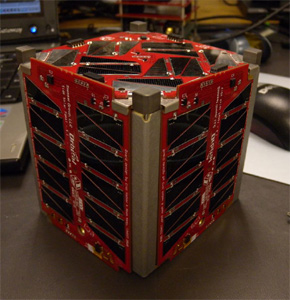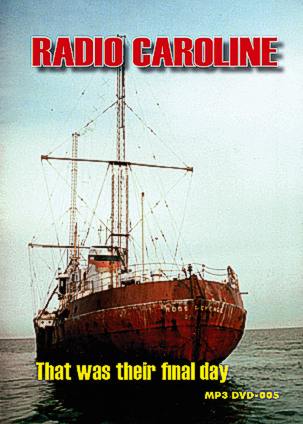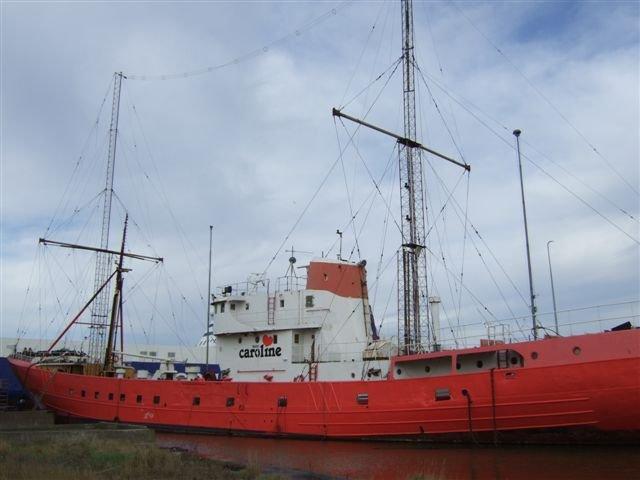www.rhci-online.net/radiogram/radiogram.htm
██╗ ██╗ ██████╗ █████╗ ██████╗ █████╗ ██████╗ ██╗ ██████╗ ██████╗ ██████╗ █████╗ ███╗ ███╗
██║ ██║██╔═══██╗██╔══██╗ ██╔══██╗██╔══██╗██╔══██╗██║██╔═══██╗██╔════╝ ██╔══██╗██╔══██╗████╗ ████║
██║ ██║██║ ██║███████║ ██████╔╝███████║██║ ██║██║██║ ██║██║ ███╗██████╔╝███████║██╔████╔██║
╚██╗ ██╔╝██║ ██║██╔══██║ ██╔══██╗██╔══██║██║ ██║██║██║ ██║██║ ██║██╔══██╗██╔══██║██║╚██╔╝██║
╚████╔╝ ╚██████╔╝██║ ██║ ██║ ██║██║ ██║██████╔╝██║╚██████╔╝╚██████╔╝██║ ██║██║ ██║██║ ╚═╝ ██║
╚═══╝ ╚═════╝ ╚═╝ ╚═╝ ╚═╝ ╚═╝╚═╝ ╚═╝╚═════╝ ╚═╝ ╚═════╝ ╚═════╝ ╚═╝ ╚═╝╚═╝ ╚═╝╚═╝ ╚═╝
http://voaradiogram.net/
Slanted images this weekend
/ H ello friends,+180 ppm
-2080 ppm !"
Δ ppm +180/-2080
= -2260 ppm
More about then slanted images
this weekend on VOA Radiogram..."After
several calibration checks, my setting was
-2250 for RX ."
Roger:
For myself, I
determined a value of about - 22 60
ppm (previously it was zero)
RSID: <<2013-11-23T16: 02 Z
MFSK-16
@ 17860 000+1500 >>
Welcome to program 34 of VOA Radio from the Voice of America.
I'm Kim Andrew Elliott in Washington.
Here is the lineup for today's program:
1:39 MFSK16: Program preview (now) (3:07)
4:50 MFSK32: Milky Way evolution, with image (4:52)
9:41 MFSK32: Russian text sample* (2:11)
11:54 MFSK64: Russian text sample* and image (1:49)
13:39 MFSK64/Flmsg**: Aquaponics, with image (5:17)
19:11 MFSK32: Email address (:43)
19:55 MFSK128: High school cubesat (1:18)
21:14 MFSK128L: High school cubesat (1:39)
22:55 MFSK32: Image of satellite (2:04)
24:58 MFSK32: Closing announcements (:34)
25:30 MFSK32: Some extras...
*Use UTF-8 character set
**Use Flmsg with Fldigi.
Please send reception reports to radiogram@voanews.com
And visit voaradiogram.net
Twitter: @VOARadiogram
VOA Radiogram now changes to MFSK32...
RSID: <<2013-11-23T16:05 Z
MFSK-32 @ 17860 000+1500 >>
This is VOA Radiogram in MFSK32...
As we approach the winter solstice, reception on our 17860 and
15670 kHz frequencies to Europe may become more difficult. The
faster text modes might not provide 100% copy, but the slower
modes should be more robust during poor conditions. Here
is a VOA News story in our usually reliable MFSK32 mode...
Hubble 'Scrapbook' Sheds Light on Milky Way's Evolution
VOA News
November 15, 2013
The U.S. space agency, NASA, released a series of photos that
show how our galaxy, the Milky Way, may have evolved.
Astronomers used Hubble's deep-sky surveys to study the evolution
of 400 galaxies similar to the Milky Way and noted their
appearance at various stages of development over a time span of
11 billion years.
Judging from images of these far-flung galaxies, they found the
Milky Way likely began as faint, blue, low-mass object containing
lots of gas. Gas is the fuel for star birth and the blue color is
an indicator of rapid star formation. It was probably a flat disk
with a bulge in the middle, both of which grew simultaneously
into the majestic spiral seen today.
"For the first time, we have direct images of what the Milky Way
looked like in the past," said study co-leader Pieter G. van
Dokkum of Yale University in New Haven, Conn. "Of course, we
can't see the Milky Way itself in the past. We selected galaxies
billions of light-years away that will evolve into galaxies like
the Milky Way. By tracing the Milky Way's siblings, we find that
our galaxy built up 90 percent of its stars between 11 billion
and 7 billion years ago, which is something that has not been
measured directly before."
The team's results were published July 10 in The Astrophysical
Journal Letters. A second paper appears in the Nov. 11 online
edition of The Astrophysical Journal.
http://www.voanews.com/content/hubble-scrapbook-sheds-light-on-evolution-of-milky-way/1791040.html
Next on VOA Radiogram, an MFSK32 image with the caption: This
artist's illustration of the early Milky Way is based on photos
of similar galaxies taken by the Hubble Space Telescope...
Sending Pic:214x124C;
Internet:
Next on VOA Radiogram, more of our experiments with non-Latin
alphabets.
The following is an excerpt of a VOA Russian new story in the
MFSK32 mode...
Because of the additional code required for the Cyrillic script,
the Russian prints out rather slowly in MFSK32. Let's try to
speed up the printout of the Russian text using the MFSK64 mode.
VOA Radiogram now changes to MFSK64...
RSID: <<2013-11-23T16:10 Z
MFSK-32 @
17860 000+1500 >>
НАСА хочет уменьшить зависимость от России
Русская служба «Голоса Америки»
20.11.2013
Несмотря на неопределенность с бюджетом, НАСА объявило прием
заявок на создание коммерческого космического такси для доставки
космонавтов на Международную космическую станцию.
RSID: <<2013-11-23T16:12 Z
MFSK-64 @
17860 000+1500 >>
This is VOA Radiogram in MFSK64...
НАСА хочет уменьшить зависимость от России
Русская служба «Голоса Америки»
20.11.2013
Несмотря на неопределенность с бюджетом, НАСА объявило прием
заявок на создание коммерческого космического такси для доставки
космонавтов на Международную космическую станцию.
Благодаря этому аэрокосмическое агентство США надеется к 2017
году покончить с монополией России на доставку экипажей к МКС.
Please send reception reports to radiogram@voanews.com
And visit voaradiogram.net
Twitter: VOARadiogram
VOA Radiogram continues in MFSK64 for a VOA News story in Flmsg
format:
...
start
[WRAP:beg][WRAP:lf][WRAP:fn VOAR34_aquaponics.b2s]<flmsg>1.1.33
:hdr_fm:19
VOA
20132111082636
:hdr_ed:19
VOA
20132111054214
<blankform>
:mg:4473 <svg version="1.1" width="98" height="42">
<polygon fill="#132FBE" points="22,25 29,1 43,1 30,42 15,42 0,1 15,1"/>
<polygon fill="#132FBE" points="77,17 83,42 98,42 84,1 70,1 55,42 70,42"/>
<circle fill="#FFFFFF" cx="49" cy="21" r="21"/>
<circle fill="#132FBE" cx="49" cy="21" r="9"/>
</svg>
<h1 style="color:#132FBE;font-family:sans-serif">Voice of America</h1><h2
style="color:#FF0000;font-family:sans-serif">News / Science & Technology</h2><h2
style="font-family:sans-serif">
Combined Fish-Vegetable Farming Catching On</h2><b>Steve Baragona<br>November
18, 2013</b>
BALTIMORE - The fish don't like strangers.
Ellen Perlman pours a scoop of fish food into one of four blue plastic tanks at
Chesapeake Aquaponics, about half an hour
from Baltimore. Picture a giant kiddie pool that's deep enough to stand in up to
your belly.
"You would think we have piranhas here," she said, expecting a torrent of
tilapia to froth the water's surface but it
remains stubbornly smooth. She chuckled. "Maybe not."
She says the fish recognize her voice and her footsteps, but not a visiting
reporter's.
"Fish are very sensitive animals," she added.
<b>Environmental sweet spot</b>
But it's an indelicate aspect of these delicate creatures that makes her garden
grow. From these tanks, water rich in what
you might call "fish manure" flows through a filter system and into the adjacent
plant beds, where lettuce and other
vegetable plants float in Styrofoam rafts.
"It's a way of recycling the fish nutrients," she says.
It's called aquaponics. It combines aquaculture - or fish farming - with
hydroponics - growing plants without soil.
Aquaponics hits a sweet spot for environmentalists. It recycles fish waste into
plant food. Hydroponics typically uses less
water than conventional farming. And for those concerned about insecticides on
their produce, the fact that the fish share
the water with the plants means aquaponic farmers have to be very careful about
what they spray.
"Any type of spray would harm the fish," Perlman said. Even insecticidal soaps
popular with organic growers are off limits.
Another part of aquaponics' appeal is the fact that overfishing is depleting the
world's oceans. Fish farming accounts for
at least half the world's production, but waste from all those confined fish is
polluting some areas.
"There are fewer and fewer fish in the ocean and more and more fish will be
raised on farms," said Dave Love, a microbiolog
ist with the Johns Hopkins University Center for a Livable Future (CLF). "The
trick is, how do we do that responsibly,
sustainably and in ways that make fish farmers money?"
<b>Small but productive</b>
Tackling those questions is what CLF's Cylburn Aquaponics Farm aims to do.
Located next to greenhouses at Baltimore's Cylburn Arboretum, the farm has been
up and running for a little over a year.
Farm manager Laura Genello says she's delivering about 10 to 20 pounds (five to
10 kilograms) of produce per week to local
farmers markets from about 300 square feet (28 square meters) of growing space.
"Which is relatively small," she said, "but 10 pounds of greens is a fair amount
of greens."
The farm harvested its first 20 one-kilo fish earlier this fall, and they expect
to produce about 275 fish per year.
<b>Profitable?</b>
But whether aquaponics is profitable is an open question. Energy costs are a big
factor.
"Our tilapia like 70 degrees (21C). In the winter, it gets quite a bit cooler,"
Love said. "So, we need to heat the space."
Cylburn Aquaponics Farm is grant-funded, but Chesapeake Aquaponics is a
commercial venture. It has not turned a profit yet,
but Perlman is optimistic that providing high-quality fresh greens in the middle
of winter will win her a niche market.
The elegance of aquaponics' symbiosis is alluring, and aquaponic businesses and
nonprofit projects are popping up around
the country and around the world.
But Genello is cautious.
"I think we have to be careful about not getting ahead of ourselves with the
excitement about the system because there are
a lot of things that are not quite perfect about it," Genello said. "That's why
it's really important for more people to
actually do aquaponics, so we get more people experimenting and playing around
with what works and what doesn't."
<a href="http://www.voanews.com/content/combined-fish-vegetable-farming-catching-on/1792728.html">www.voanews.com/content/c
ombined-fish-vegetable-farming-catching-on/1792728.html</a>
[WRAP:chksum 5BD7][WRAP:end]
... end
Voice of America
News / Science & Technology
Combined Fish-Vegetable Farming Catching
On
Steve Baragona
November 18,
2013
BALTIMORE - The fish don't like strangers.
Ellen Perlman pours a scoop of fish food into one of four blue plastic tanks at
Chesapeake Aquaponics, about half an hour from Baltimore. Picture a giant kiddie
pool that's deep enough to stand in up to your belly.
"You would think we have piranhas here," she said, expecting a torrent of tilapia
to froth the water's surface but it remains stubbornly smooth. She chuckled. "Maybe
not."
She says the fish recognize her voice and her footsteps, but not a visiting reporter's.
"Fish are very sensitive animals," she added.
Environmental sweet spot
But it's an indelicate aspect of these delicate creatures that makes her garden
grow. From these tanks, water rich in what you might call "fish manure" flows through
a filter system and into the adjacent plant beds, where lettuce and other vegetable
plants float in Styrofoam rafts.
"It's a way of recycling the fish nutrients," she says.
It's called aquaponics. It combines aquaculture - or fish farming - with hydroponics
- growing plants without soil.
Aquaponics hits a sweet spot for environmentalists. It recycles fish waste into
plant food. Hydroponics typically uses less water than conventional farming. And
for those concerned about insecticides on their produce, the fact that the fish
share the water with the plants means aquaponic farmers have to be very careful
about what they spray.
"Any type of spray would harm the fish," Perlman said. Even insecticidal soaps popular
with organic growers are off limits.
Another part of aquaponics' appeal is the fact that overfishing is depleting the
world's oceans. Fish farming accounts for at least half the world's production,
but waste from all those confined fish is polluting some areas.
"There are fewer and fewer fish in the ocean and more and more fish will be raised
on farms," said Dave Love, a microbiologist with the Johns Hopkins University Center
for a Livable Future (CLF). "The trick is, how do we do that responsibly, sustainably
and in ways that make fish farmers money?"
Small but productive
Tackling those questions is what CLF's Cylburn Aquaponics Farm aims to do.
Located next to greenhouses at Baltimore's Cylburn Arboretum, the farm has been
up and running for a little over a year.
Farm manager Laura Genello says she's delivering about 10 to 20 pounds (five to
10 kilograms) of produce per week to local farmers markets from about 300 square
feet (28 square meters) of growing space.
"Which is relatively small," she said, "but 10 pounds of greens is a fair amount
of greens."
The farm harvested its first 20 one-kilo fish earlier this fall, and they expect
to produce about 275 fish per year.
Profitable?
But whether aquaponics is profitable is an open question. Energy costs are a big
factor.
"Our tilapia like 70 degrees (21C). In the winter, it gets quite a bit cooler,"
Love said. "So, we need to heat the space."
Cylburn Aquaponics Farm is grant-funded, but Chesapeake Aquaponics is a commercial
venture. It has not turned a profit yet, but Perlman is optimistic that providing
high-quality fresh greens in the middle of winter will win her a niche market.
The elegance of aquaponics' symbiosis is alluring, and aquaponic businesses and
nonprofit projects are popping up around the country and around the world.
But Genello is cautious.
"I think we have to be careful about not getting ahead of ourselves with the excitement
about the system because there are a lot of things that are not quite perfect about
it," Genello said. "That's why it's really important for more people to actually
do aquaponics, so we get more people experimenting and playing around with what
works and what doesn't."
www.voanews.com/content/combined-fish-vegetable-farming-catching-on/1792728.html
Next on VOA Radiogram, an MFSK64 image of lettuce grown at
Chesapeake Aquaponics...
Next on VOA Radiogram, an MFSK64 image of lettuce grown at
Chesapeake Aquaponics...
Sending Pic:202x134C;
RSID: <<2013-11-23T16 :19 Z
MFSK-32
@ 17860 000+1500 >>
This is VOA Radiogram in MFSK32...
Please send reception reports to radiogram@voanews.com
And visit voaradiogram.net
Twitter: VOARadiogram
VOA Radiogram continues its comparison of MFSK128 with its
long-interleave counterpart MFSK128L. The same VOA News story
will be sent in both modes.
VOA Radiogram now changes to MFSK128...
RSID: <<2013-11-23T16 :20 Z
MFSK-128 @
17860 000+1500 >>
RSID: <<2013-11-23T16 :21 Z
MFSK-128L @
17860 000+1500 >>
This is VOA Radiogram in MFSK128...
Satellite Built by High School Students Set to Launch
VOA News
November 19, 2013
A satellite built by U.S. high school students is set to be
launched tonight - a first for the U.S. space agency, NASA.
The launch of the privately built Minotaur rocket will carry 29
tiny satellites, known as nanosatellites - or cubesats, into
orbit in a scheduled launch at 0030 GMT.
The Orbital Sciences Corporation rocket is launching as an Air
Force test program, carrying small satellites. One is an ordinary
smartphone NASA converted and another was built by students at
Thomas Jefferson High School in Alexandria, Virginia.
The launch marks the first time NASA will launch a cubesat
developed by students not yet in college.
"The advancements of the cubesat community are enabling an
acceleration of flight-qualified technology that will ripple
through the aerospace industry," said Jason Crusan, director of
Advanced Exploration Systems, the office that oversees the
Cubesat Launch Initiative at NASA Headquarters in Washington.
"Our future missions will be standing on the developments the
cubesat community has enabled."
According to the Thomas Jefferson High School website about the
satellite, known as TJ3Sat, the payload, will allow "students and
other amateur radio users the opportunity to send and receive
data from the satellite."
"Onboard the satellite a Text Speak module is used to convert
text messages into an analog voice signal," said the website.
"Students and other users from around the world can submit text
strings to be uploaded to the TJ3Sat website. Approved text
strings will be transmitted to the satellite and the resulting
voice interpretation will be relayed back to Earth over an
amateur radio frequency using the onboard Stensat radio."
Since 2010, the cubesat Launch Initiative has issued four
announcements of opportunity and selected more than 90 cubesats
from public and private institutions and government labs to
launch as auxiliary payloads aboard commercial rockets. The
cube-shaped satellites are approximately four inches long per
unit, have a volume of about one quart and weigh less than three
pounds. Cubesat research addresses science, exploration,
technology development, education or operations.
More than 300 students took part in this fourth installment of
NASA's cubesat Launch Initiative and it's Educational Launch of
Nanosatellite (ELaNa) Missions, which enables students, teachers
and faculty to obtain hands-on flight hardware development
experience.
http://www.voanews.com/content/satellite-built-by-high-schoolers-
set-to-launch/1793599.html
See also: http://www.tjhsst.edu/students/activities/tj3sat/
VOA Radiogram now changes to MFSK128L...
.
.
.
.
.
This is VOA Radiogram in MFSK128L...
Satellite Built by High School Students Set to Launch
VOA News
November 19, 2013
A satellite built by U.S. high school students is set to be
launched tonight - a first for the U.S. space agency, NASA.
The launch of the privately built Minotaur rocket will carry 29
tiny satellites, known as nanosatellites - or cubesats, into
orbit in a scheduled launch at 0030 GMT.
The Orbital Sciences Corporation rocket is launching as an Air
Force test program, carrying small satellites. One is an ordinary
smartphone NASA converted and another was built by students at
Thomas Jefferson High School in Alexandria, Virginia.
The launch marks the first time NASA will launch a cubesat
developed by students not yet in college.
"The advancements of the cubesat community are enabling an
acceleration of flight-qualified technology that will ripple
through the aerospace industry," said Jason Crusan, director of
Advanced Exploration Systems, the office that oversees the
Cubesat Launch Initiative at NASA Headquarters in Washington.
"Our future missions will be standing on the developments the
cubesat community has enabled."
According to the Thomas Jefferson High School website about the
satellite, known as TJ3Sat, the payload, will allow "students and
other amateur radio users the opportunity to send and receive
data from the satellite."
"Onboard the satellite a Text Speak module is used to convert
text messages into an analog voice signal," said the website.
"Students and other users from around the world can submit text
strings to be uploaded to the TJ3Sat website. Approved text
strings will be transmitted to the satellite and the resulting
voice interpretation will be relayed back to Earth over an
amateur radio frequency using the onboard Stensat radio."
Since 2010, the cubesat Launch Initiative has issued four
announcements of opportunity and selected more than 90 cubesats
from public and private institutions and government labs to
launch as auxiliary payloads aboard commercial rockets. The
cube-shaped satellites are approximately four inches long per
unit, have a volume of about one quart and weigh less than three
pounds. Cubesat research addresses science, exploration,
technology development, education or operations.
More than 300 students took part in this fourth installment of
NASA's cubesat Launch Initiative and it's Educational Launch of
Nanosatellite (ELaNa) Missions, which enables students, teachers
and faculty to obtain hands-on flight hardware development
experience.
http://www.voanews.com/content/satellite-built-by-high-schoolers-
set-to-launch/1793599.html
See also:
http://www.tjhsst.edu/students/activities/tj3sat/
VOA Radiogram now changes to MFSK32...
.
.
.
.
.
RSID: <<2013-11-23T16 :23 Z
MFSK-32 @
17860 000+1500 >>
This is VOA Radiogram in MFSK32...
Next, an MFSK32 image of the TJ3Sat, which transmits on 437.32
MHz...
Sending Pic:174x180C;
Internet:
Please send reception reports to radiogram@voanews.com
And visit voaradiogram.net
Twitter: VOARadiogram
Thanks to colleagues at the Edward R. Murrow shortwave
transmitting station in North Carolina.
I'm Kim Elliott. Please join us for the next VOA Radiogram.
This is VOA, the Voice of America.
Sending Pic:200x200;
Sending Pic:632x56C;
RSID: <<2013-11-23T16 :29 Z
OL 32-1K @ 17860000+1500 >>
Thank you for decoding the modes on VOA Radiogram.
www.rhci-online.net/radiogram/radiogram.htm
Radio
Nostalgie
-
Images
received via
E A SYPAL/DSSTV
on 14233 kHz/USB yesterday ,
3 pictures of G ØPWX
